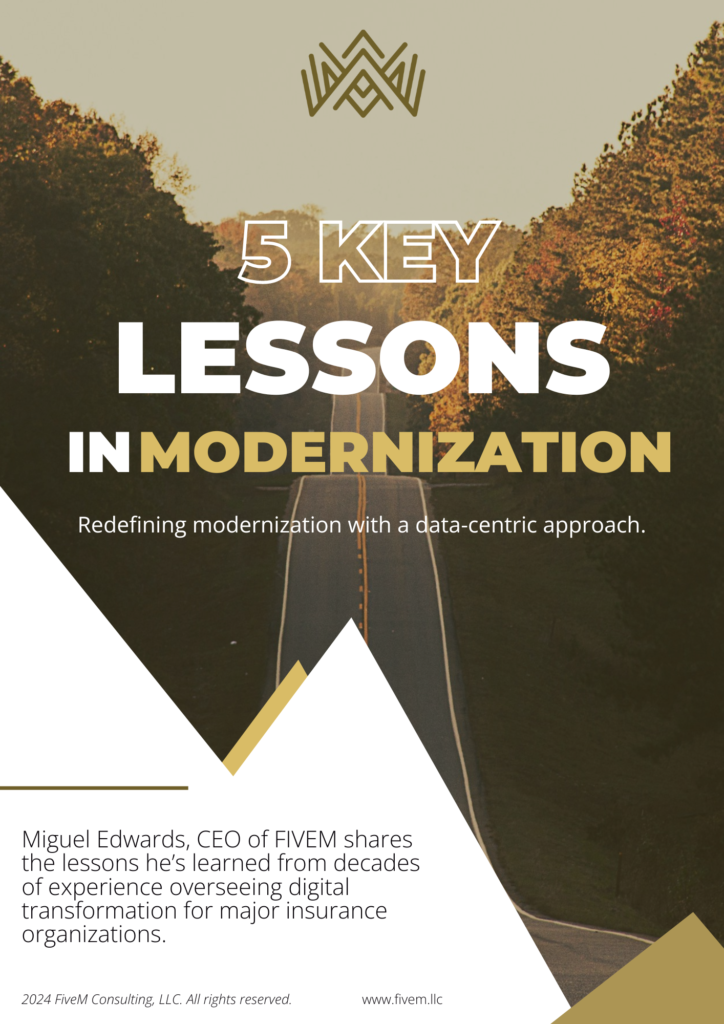Let’s be real, when you’re working in insurance, there’s no such thing as a “simple” technology purchase. With data privacy, compliance rules, and legacy systems all part of the mix, choosing an Insurtech vendor can feel more like navigating a legal minefield than shopping for software. In fact, Gartner found that a whopping 60% of buyers regretted a software purchase within the past 18 months. And in a field as tightly regulated and risk-sensitive as insurance, the stakes are even higher.
AI-powered platforms and automation tools promise speed, cost savings, and better insights. But the wrong choice could result in data breaches, non-compliance, or even operational shutdowns. This guide is here to walk you through a structured, confident approach to vetting vendors—especially those offering AI solutions. We’ll dive into everything from security protocols and regulatory knowledge to integration with your legacy systems and the vendor’s long-term stability.
Understand the Regulatory Landmines Before You Step
In the insurance world, you don’t just want due diligence, you absolutely need it. An Insurtech vendor who doesn’t grasp the laws you operate under can expose your company to massive risks. Think fines, lawsuits, or lost customer trust. And it’s not just theoretical. More than 98% of companies have integrated with a third-party vendor that suffered a breach, and over 80% of risk professionals say vendor failures directly caused operational disruptions.
Regulators are upping the ante too. Many U.S. states now follow the NAIC Insurance Data Security Model Law, which requires carriers to enforce strict security protocols, especially for third-party vendors. You’re also on the hook under federal rules like the Gramm-Leach-Bliley Act (GLBA) and, if you’re operating globally, data protection regulations like GDPR. And when AI is involved, the scrutiny goes even deeper. Guidance from NAIC around the responsible use of AI in underwriting or claims demands explainability, transparency, and accountability even when the tools are built by a third-party.
Simply put, skipping the legal checks could cost you dearly. This isn’t just procurement, it’s enterprise risk management.
Start With the Insurtech Vendor’s Roots
Before you look at the tech itself, take a step back and examine who you’re working with. Do they have real credibility in the insurance industry? Have they successfully implemented solutions in your line of business? Is their leadership experienced in both technology and insurance regulation?
It’s worth asking how long they’ve been around, whether they’ve worked with carriers of your size, and how financially stable they are. If they can’t provide references or case studies from other insurers, that’s a sign you need to dig deeper. Look for signs of strong funding or audited financial statements if you’re working with a startup. A mature vendor should be transparent about their client base and customer retention, and they should welcome your scrutiny.
If a vendor ducks these questions or seems vague about past failures, it might be time to hit pause.
Dig Deep Into Compliance Confidence
Insurance CIOs need vendors that not only understand tech, but the rules of the road. You’ll want to confirm that the Insurtech vendor has done their homework on the regulations that apply to your work—state and federal laws, NAIC guidance, and data privacy frameworks.
You should expect clear explanations of how their solution complies with industry laws. If their tech is touching underwriting, claims, or customer data, they must be aware of things like Unfair Trade Practices laws and rate filing requirements. Vendors that operate in this space should also know the ins and outs of NAIC’s AI Model Bulletin, which emphasizes fairness, explainability, and consumer rights in AI decision-making.
Ask if they’ll agree—contractually—to cooperate with regulators, submit to audits, and ensure you retain the ability to monitor their actions. If a vendor pushes back against these kinds of clauses or gives you vague reassurances like “we’re compliant with everything,” you should be concerned. You don’t want to be the one explaining to a regulator why your vendor can’t provide documentation.
Lock Down Cybersecurity Because Hackers Don’t Care If It’s a Third Party
Data breaches in insurance don’t just damage your bottom line, they damage your reputation and, often, trigger regulatory scrutiny. That’s why cybersecurity needs to be one of your first lines of questioning when evaluating any Insurtech vendor.
Look for Insurtech vendors who have certifications like SOC 2 Type II, ISO/IEC 27001, or HITRUST. These third-party validations show they’ve taken concrete steps to protect your data. Ask about encryption policies, access controls, and whether they’ve ever experienced a breach. If they have, what did they learn and change? The best vendors will be transparent, not defensive.
Also find out who’s in charge of security on their team. A serious vendor will have someone dedicated to managing security and risk, regular employee training, and a tested incident response plan. And don’t forget to get clear on their willingness to sign a data protection agreement or Business Associate Agreement, especially if you’re dealing with sensitive personal or health data.
Demystify the AI Or Walk Away
It’s one thing to have AI in the mix. It’s another thing entirely to understand what it’s doing. In regulated industries like insurance, “black box” algorithms aren’t just bad practice, they could be illegal.
If a vendor can’t clearly explain how their AI makes decisions, that’s a problem. You need to know what data their models were trained on, how they mitigate bias, and how you can explain AI-driven decisions to consumers or regulators. Ask whether you can audit the model outputs or bring in a third-party for validation.
Vendors should be prepared to discuss bias testing, model governance, version control, and how frequently their systems are updated. They should also be open about whether human judgment can override AI outcomes, particularly in underwriting or claims scenarios. If they refuse to show you how the AI works or admit to any failures, it’s probably because they haven’t built a system ready for the real world.
Make Sure It Fits, Technically and Operationally
One of the most overlooked parts of vendor vetting is technical compatibility. You need to know exactly how the new solution will integrate with your existing systems especially if you’re still running legacy infrastructure. Can their platform work with your current policy admin system or claims software? Do they support real-time APIs, or are they still operating off flat file transfers?
Ask whether they’ve worked with systems like yours, and if they provide tools or support for data mapping, cleansing, and migration. If your systems are outdated or unique, bring that up early to see how they react. Their answers will tell you whether they’re just trying to close a sale or if they’ve truly built a flexible, insurance-aware solution.
Vendors that are confident in their product will often offer a proof-of-concept or pilot program, allowing you to test integrations in a sandbox environment. This is your chance to iron out technical kinks before fully committing.
Know What Support Looks Like When the Honeymoon Ends
Even the best software will hit bumps. What matters is how the Insurtech vendor responds when things go wrong. That’s why it’s important to understand their support model before signing a contract.
Ask what onboarding looks like. Will they help with training, change management, or data migration? Will they assign a customer success manager or implementation lead to your project? You’ll also want to know their escalation paths, especially for high-severity issues, and whether their support operates around the clock.
It’s also worth understanding how often they release updates and how those updates are communicated. You don’t want a mission-critical tool to go down because a surprise update broke your integration.
And don’t ignore the fine print on contract exits. If things go south, can you get your data back quickly and cleanly? If a vendor won’t provide clear offboarding terms or charges a premium to export your data, it’s worth reconsidering.
Look for a Partner, Not Just a Provider
At the end of the day, this isn’t just about tech, it’s about people and partnership. Does the vendor treat you like just another contract, or are they genuinely interested in your success? Are they transparent about their limitations? Do they listen and adapt when your needs evolve?
Ask about their long-term roadmap and how it aligns with your own digital strategy. Are they investing in areas that matter to you? like explainable AI, customer experience, or regulatory adaptability?
Cultural alignment matters more than most people think. If your company values transparency, security, and responsible innovation, your vendors should too. Trust your gut during negotiations. If something feels off, dig deeper before moving forward.
A Quick Word on Red Flags
If a vendor avoids tough questions, gives vague answers about their security posture, lacks insurance domain expertise, or refuses to provide client references, that’s your cue to step back. Over-the-top sales promises, pressure to close quickly, or pushback on standard legal protections should also raise concern.
Good vendors are collaborative, open, and ready to be held accountable. Anything less is a liability waiting to happen.
Wrapping It Up: Smart Vetting Leads to Smart Partnerships
Navigating the Insurtech vendor landscape doesn’t have to be overwhelming. With a thoughtful, tactical approach, you can cut through the hype, dodge costly mistakes, and partner with vendors that actually help move your business forward.
Ask the hard questions. Document your findings. Bring in legal, IT, compliance, and security stakeholders early. And always, always trust your instincts.
In a world where innovation is table stakes and risk never sleeps, the right vendor is more than a tech provider, they’re a partner in your transformation journey.





